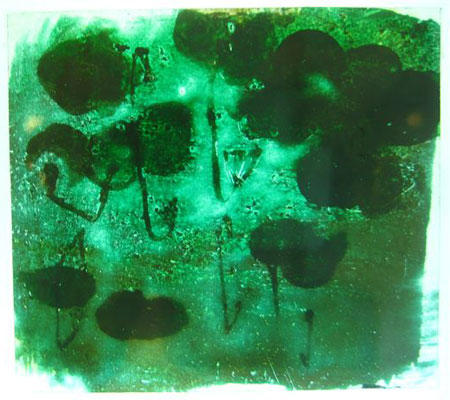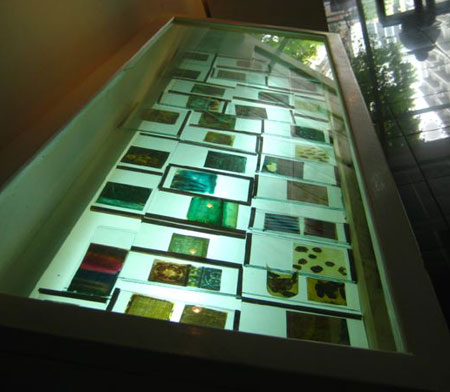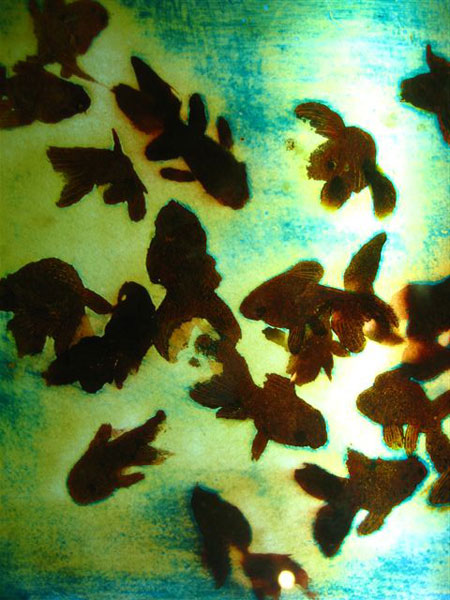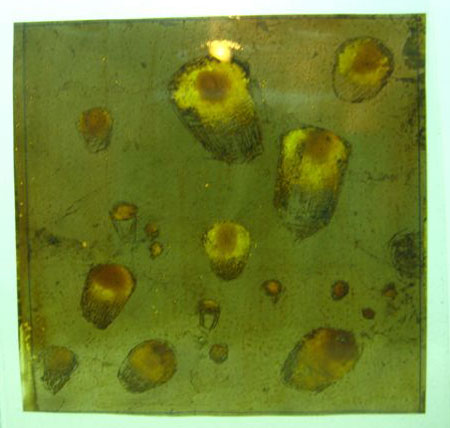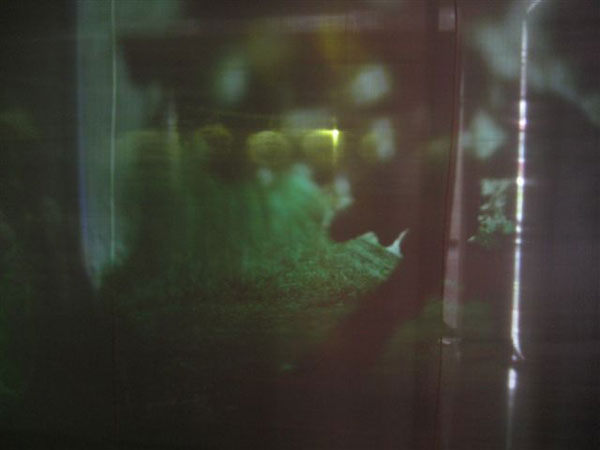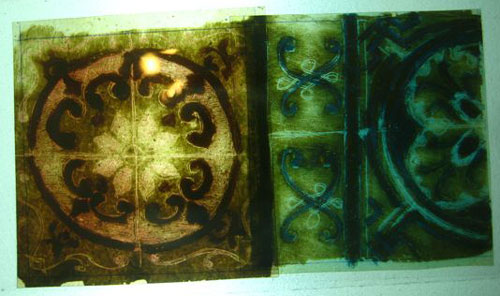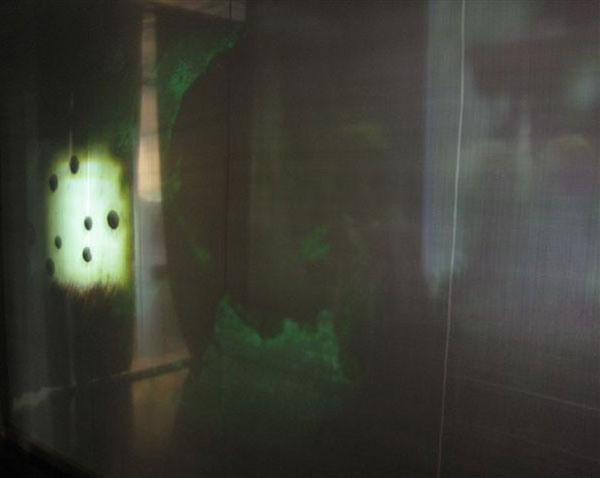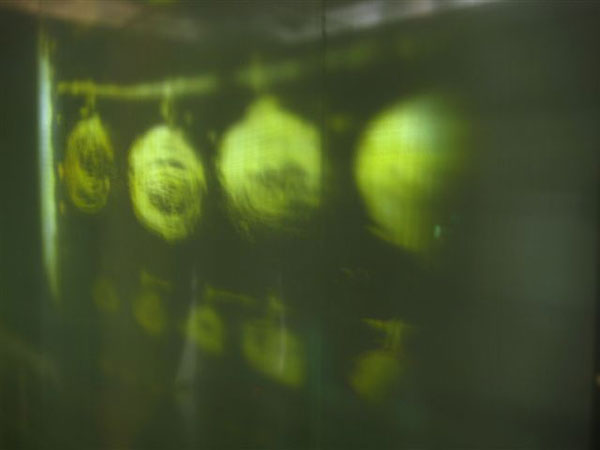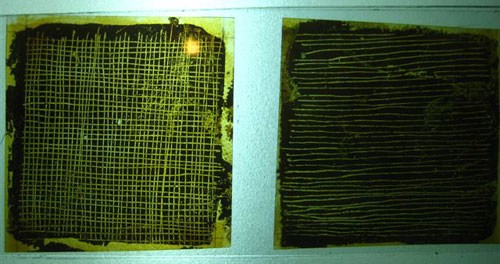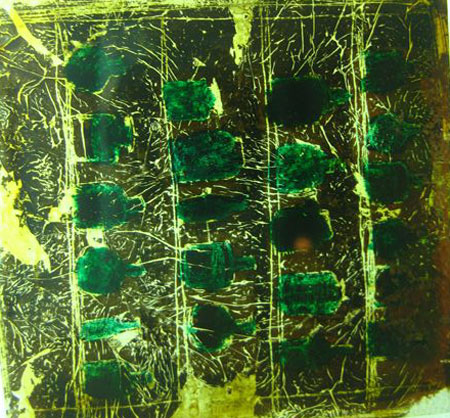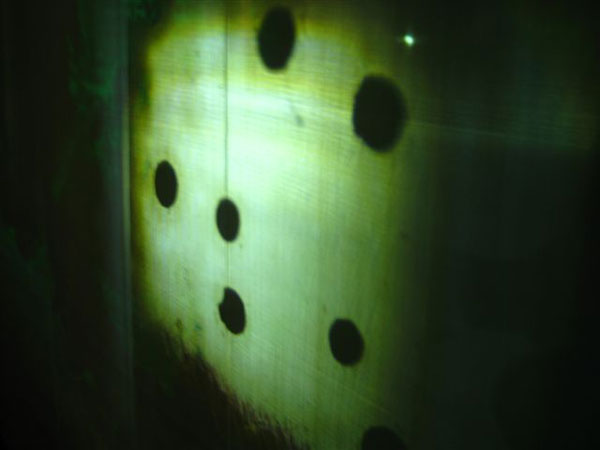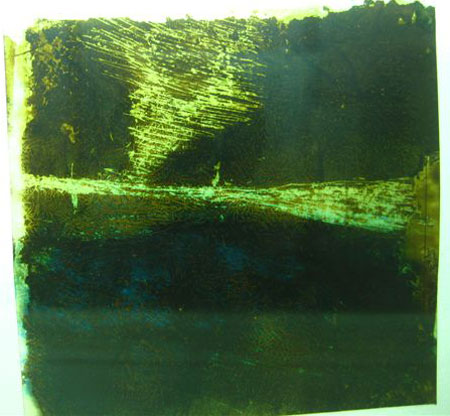15 May 2013
"KVT in palimpsest with Phi Phi Oanh"
Source: http://hanoigrapevine.com/2013/05/kvt-phi-phi-does-it-yet-again/
Phi Phi Oanh never ceases to amaze me as she experiments with the properties of traditional lacquer, bending and breaking the rules, opening new pathways and bewildering the purists. It’s little wonder that I’m one of her biggest fans…
At L’Espace Phi Phi has mounted a daring exhibition of lacquer works called ‘Palimpsest’ which is one of those hard to pronounce without getting your tongue tied in knots words and which comes from Ancient Greek (palimpsestos) sort of meaning scraped clean.
The Romans used to work on wax coated tablets that could be smoothed and re-used and Cicero used the term palimpsest to describe the practice. Later it referred to parchment (in the days when parchments and paper were expensive scarcities) that was scraped of its original text so that a new one could be written or drawn on it. Often, and over time, the original text was often visible by transparency, a palimpsest.
You can still occasionally buy those magic slates for kids that erases the text when you lift the plastic coated page you initially wrote on. However you often find that the palimpsest of previous fun appears like a phantom.
Gore Vidal’s memoir is evocatively titled ‘Palimpsest’ and fits this remarkable novelist so well as it scrapes away the present to reveal images of the past, scratched and uneven and present a transparent truth
The word crosses many boundaries and in archeology it is used, simplistically, to describe repetitions of designs on the various layers of a dig.
It can be used to describe the lines left when an appliance is removed (a picture frame from the wall!)
I guess those urban walls that are plastered and re-plastered with posters could use the term and in Paris a permanent street art project is named Palimpsest and local and international artists coat and recoat Francois Mitterrand Mall with works on paper that are eventually covered by another’s paper work.
And I also like this piece, of the same name, commissioned for the San Francisco Museum of Modern Art and for the aging baby boomer rockers here’s an attempt by Palimpsest 9 to reconstruct a Cure hit:
And a You Tube clip of a palimpsest performance during Superformances in Strasbourg which pushes the term into the avant garde.
Which brings me back to Phi Phi and her ‘Palimpsest’ exhibition which definitely stretches her lacquer concepts and techniques into the avant garde.
Phi Phi uses pieces of her last year’s exhibition at L’Espace…lacquer on transparent film, and uses pieces of these as slides in redesigned projectors that use led lights. Like slides of medical specimens they are projected onto silk screens stretched over extra large wooden frames in a blacked out room. The slides are changed during the day so that the macro/micro images are never the same and so that I don’t get my non scientific mind tied up in more knots than my tongue, I’ll follow with 3 images of Phi Phi’s wall statement that have a blurred enough touch to them to be interpretations of palimpsest statements. The screens can be viewed from a variety of angles and are almost palimpsest echoes of the very brilliant lacquered metal tunnel she exhibited to enormous acclaim locally and at a triennale in China.
Pieces used as slides are displayed in a side cabinet as are originals, from the previous show in the same venue.
Ever the exciting innovator and inventor, Phi Phi’s intent was to have her palimpsest images projected, from the interior of L’Espace, onto the windows at night, creating a huge screen to be viewed by passersby. Unfortunately the bright street lights made this almost impossible so she re-invented, almost on the spot, and constructed the present black box arena with slides projected onto 3 parallel silk screens by nine modified projectors…and for those keen to see how traditional mediums and concepts can be pushed and plasticized, then it’s an exhibition that is sure to excite and fire imaginations.
As always, I can hardly wait for the next installment.
Kiem Van Tim is a keen observer of life in general and the Hanoi cultural scene in particular and offers some of these observations to the Grapevine. KVT insists that these observations and opinion pieces are not critical reviews.

